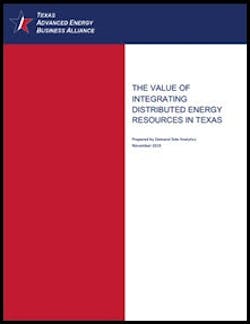Few industries have as deep a connection to the U.S. economy, policy, and innovation as the energy industry. Today, new technologies and business models are fundamentally changing the way we produce, manage, and use energy. These technologies are “advanced energy,” and they are leading us toward a prosperous future powered by secure, clean, and affordable energy.
Advanced energy encompasses a broad range of technologies, products, and services that constitute the best available technologies for meeting energy needs today and tomorrow. In recent years, distributed energy resource (DER) technologies have emerged as an additional means of producing power, managing electricity demand, and providing valuable grid services. These resources are smaller, flexible, located within load centers, typically connect to the distribution grid and are capable of decreasing net electricity demand either by injecting power locally or by reducing demand. This report, prepared by Demand Side Analytics, quantifies the value of integrating DERs into transmission and distribution planning and better incorporating them into existing wholesale markets.
Currently, DERs are not considered for their potential contributions to the grid in open, transparent transmission and distribution (T&D) planning processes
and generally are not allowed to participate as supply resources in ERCOT markets. Planning processes and market rules have been designed for large generators and industrial customers, and thus present barriers to DER participation. By functionally excluding DERs from consideration, Texas is forgoing opportunities to lower consumer costs that arise from allowing DERs to compete side-by-side with traditional generators and T&D solutions.
Texas utilities spent $40.6 billion on T&D infrastructure capital investment in the past 10 years. While some of these expenditures are unavoidable, T&D infrastructure expansion due to peak load growth can be reduced, deferred, or avoided by DERs that either inject power locally or reduce demand.
We estimate the value of T&D deferral in Texas by incorporating DERs at $344 million per year or $2.45 billion over 10 years ($2019 Present Value). On an annual basis, this represents 8.5% of total T&D infrastructure costs.
DER resources also can provide Texas valuable services by enhancing wholesale market competition and mitigating price spikes in ERCOT. Technology providers are capable of aggregating fleets of DERs into scalable grid resources. A large share of electricity costs is due to price spikes that occur in a limited number of hours. For example, in 2019, real-time prices exceeded $9,000 per MWh during a system peak, whereas the ERCOT-wide load-weighted average prices were only $35.63 per MWh across the year. The high price signals are designed to encourage the construction of new resources and motivate existing resources to produce power. Nearly all price spikes occur in the afternoon when net system loads (gross loads minus intermittent renewables) are high and in spring months when generators engage in maintenance.
To quantify the effect of adding resources on electricity costs, the relationship between wholesale market prices and net loads in ERCOT was modeled for 2014-2018. Next, different amounts of technology-agnostic resources were introduced to assess the impact on wholesale market prices.
